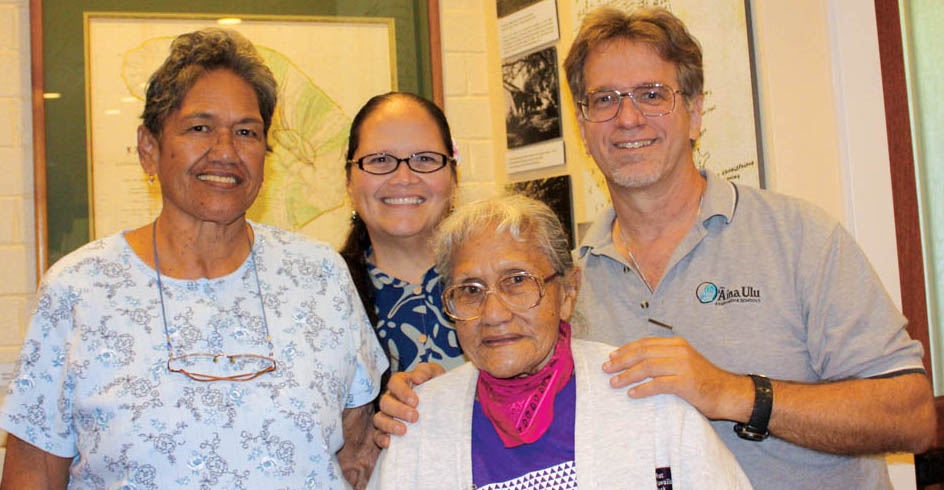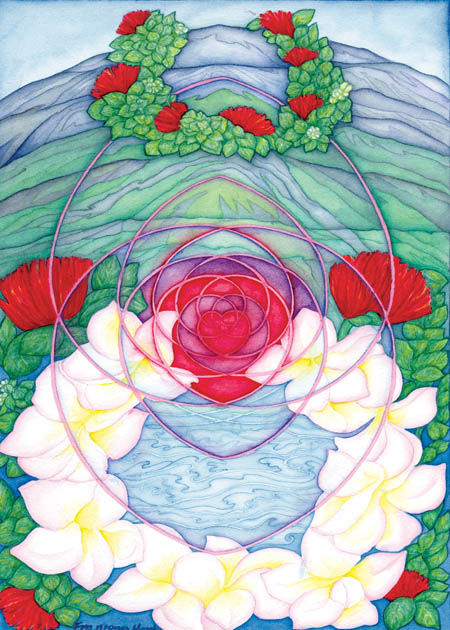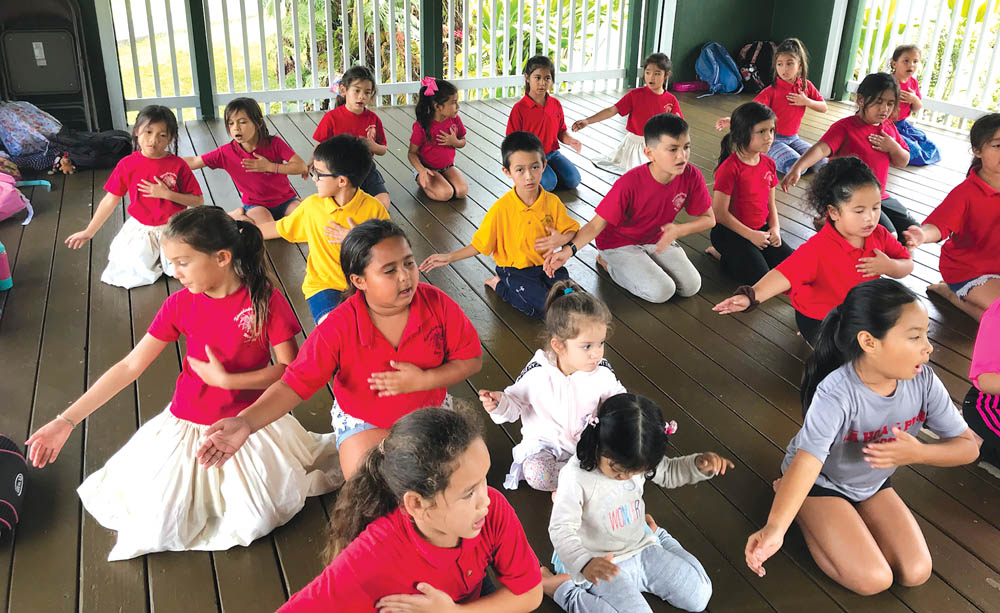
Keiki Hālau Honors Ancient Hula Legacy
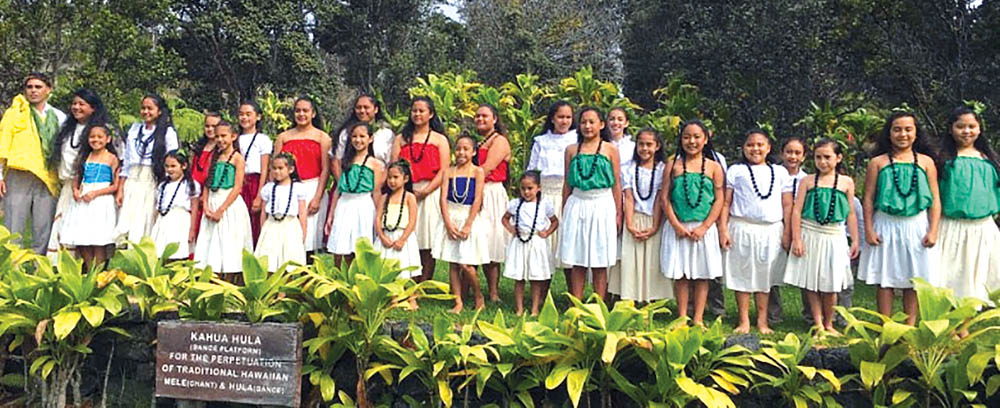
By Karen Valentine Kapono
Like one of the glistening orbs in a string of pearls, Pelehonuamea Puku‘i Suganuma Harman joins other daughters and granddaughters of hula dancers in a string of generational legacy that is rare in today’s world.
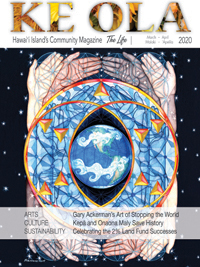
In old Hawai‘i, it was customary for granddaughters to be raised by grandmothers, and grandsons to be raised by grandfathers, in a pattern to be repeated down through the ages, ensuring that the wisdom of the elder and the customs and knowledge of the Hawaiian culture be continued in posterity. Each of the pearls of wisdom in Pelehonuamea’s family heritage contains the wisdom of the hula, of mele, and of Hawaiian language.
Sometimes, what is old is new again, and in this story of Pelehonuamea (or Pele) Harman, it is the language of the hula taught by her great-grandmother, Mary Kawena Pukui, one of the Living Treasures of Hawai‘i. Pele and her husband, Kekoa Harman, have founded perhaps the only hula hālau taught exclusively in Hawaiian language, or ‘ōlelo Hawai‘i: Hālau I Ka Leo Ola O Nā Mamo.
“Of course, when you have a family for which hula is very important, it’s very important to us,” says Pele, a sixth-grade teacher at the K–12 Hawaiian language immersion school, Ke Kula ‘o Nāwahīokalani‘ōpu‘u in Kea‘au.
Born 125 years ago this April at Na‘ālehu, Ka‘ū, Pele’s great-grandmother, affectionately known as “Tūtū Kawena,” was named Mary Abigail Ka-wena-‘ula-o-ka-lani-a-Hi‘iaka-i-ka-poli-o-Pele-ka-wahine-‘ai-honua Na-lei-lehua-a-Pele Wiggin. Her mother was Mary Pa‘ahana Kanaka‘ole of Ka‘ū and her father, Henry Nathaniel Wiggin from Salem, Massachusetts. Kawena’s mother, Keli‘ipa‘ahana Kanaka‘ole, was a noted dancer, as was her grandmother, Nali‘ipo‘aimoku, a hula dancer with Queen Emma.
Kawena’s lifetime contributions to the preservation of her language and culture are vast. The University of Hawai‘i at Manoa’s library guide states, “Mary Kawena Pukui’s published work spans over 50 years, and her contributions to Hawaiian knowledge and preservation make her a giant in both the fields of Hawaiian language and Hawaiian studies. It is not too far-fetched to say that before her death, no other living Hawaiian had worked as hard to preserve the knowledge and culture of the Hawaiian people.”
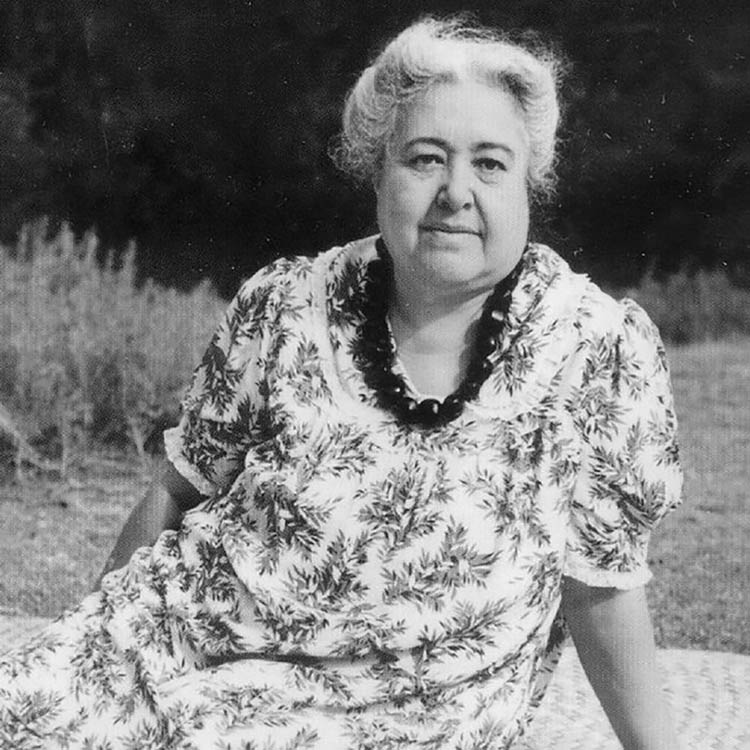
Tūtū Kawena had passed her own knowledge of hula to her daughter, Pele, her hānai (adopted) daughter, Patience Namaka Bacon, and to countless others—more than six generations of hula dancers—including some of great-granddaughter’s Pele Harman’s kumu (teachers).
“I started dancing when I was about two, when my mom took me to a hālau in Honolulu,” says Pele. “It was very traditional and the kumu, Carolee Nishi, had learned under some old, old timers like Alice Namakelua.”
As a sophomore at Kamehameha Schools on O‘ahu, Pele met Kekoa Harman from Maui, a senior. He, too, was to become a hula dancer under Keali‘i Reichel, as well as a singer and noted chanter. As fate would have it, they ran into each other in Hilo, where both had enrolled in language and Hawaiian studies curricula. Surprised to see Kekoa at school in Hilo, she says, they reconnected. “Not too long after that we started dating, then we got married and started our family. He had just graduated from college and I had one more year.”
The young couple now has three children, all schooled in Hawaiian language and culture. Oldest daughter Kalāmanamana is 18, son Ka‘umu‘ali‘i is 14, and daughter Nali‘ipo‘aimoku is 13. ‘Ōlelo Hawai‘i is their primary language at home.
Both Pele and Kekoa went on to graduate studies, as well as teaching at the immersion school.
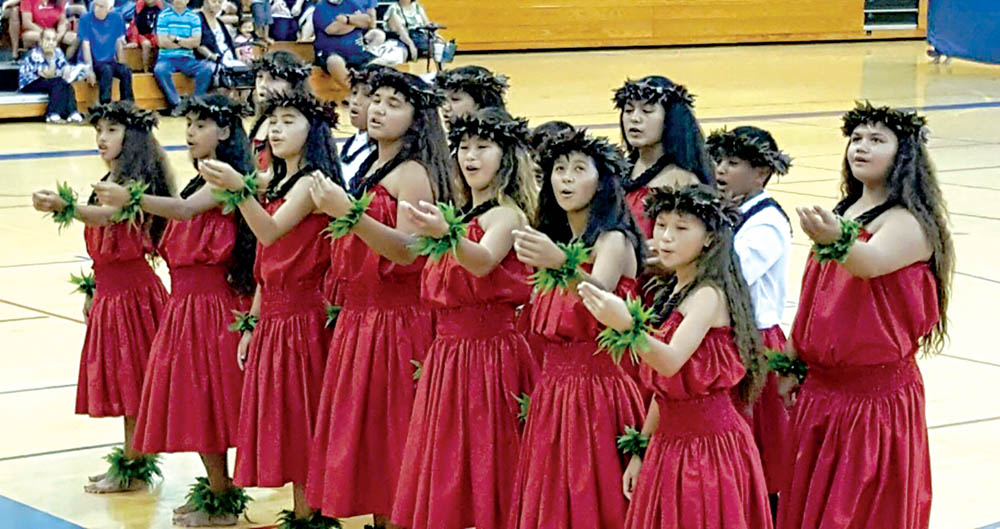
Pele’s master’s thesis was about historical hula, specifically the hula training and customs of her great-grandmother. Kekoa’s PhD dissertation is on the style of Joseph Ilala‘ole, from Puna, also a cousin of Pele’s great-grandmother.
“Born in 1873 and living to the 1960s,” says Kekoa, “he really serves as a bridge into understanding of how a lot of songs and chants that we have for our ali‘i came to be, especially because he comes from the Kamehameha line.”
“Hula genealogies often overlap,” continued Pele. “In the end, the lineage is so important. And thatʻs whatʻs beautiful about hula people. You always have to be respectful of everyone else’s style and appreciative of the creativity.”
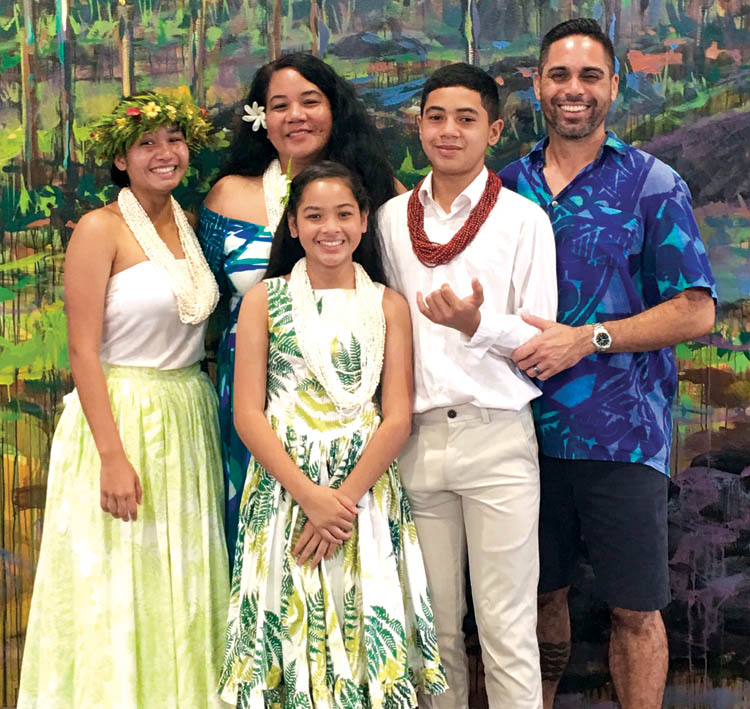
The key for them both is the root in the language. “Growing up dancing hula, you always hear the words in the mele and you know what they mean. But at some level you want to have a deeper understanding of the poetry because itʻs so, so meaningful and there’s so many layers to it, especially when you get into the higher levels of poetry, I mean, to the point where we can only guess as to what the composers meant. Then curiosity makes you work harder at trying to get at the core of what their psyche was at the time.”
Kekoa comments, “If there is no language, if we donʻt have mele—the compositions—we do not have hula. So, itʻs interesting how the overlap of our studies at this point in our life has directed our focus, along with Pele’s connection to her family, to all come together for us to work together in the hālau here in Puna.”
It all started when their five-year-old daughter, Kalāmanamana, was ready to learn hula. After first trying to teach her at home, they decided to invite other keiki. “I thought if we have a formal class setting, sheʻll do better with some peers. So we approached some of the families from school that we thought would be interested. After school they would jump into my car, and we would drive them here and teach them in our garage. We started off with all the stock hulas that I learned when I was a young child, the basics, teaching them all in Hawaiian language.”
Pele was already teaching Hawaiian language arts and social studies, as well as performing arts to sixth graders at Ke Kula ‘o Nāwahīokalani‘ōpu‘u. “They were already fluent in Hawaiian language. So we thought, ‘Well, we both enjoyed hula, we have a strong hula background. Let’s do it.’”
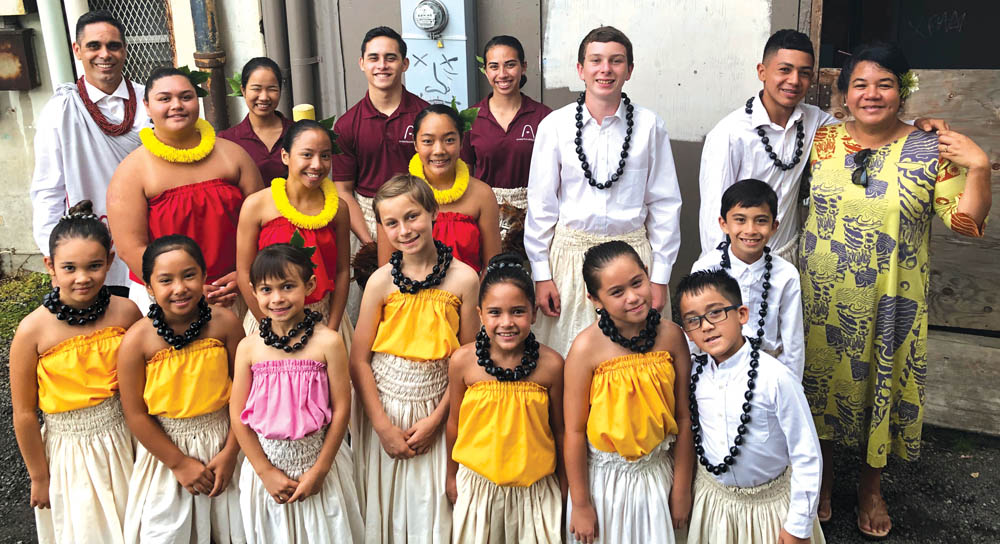
It was a true team effort. “Kekoa is very good with his chanting, too. So I would teach the movements and he could do the ipu and chant, and then vice versa with the guys. Originally it was just girls—they caught on really quickly and they really loved hula. Then more families started asking us, because they would see these kids get into my car and they would see them practice, even sometimes at recess. When it became too many requests, we got permission to use the school gym space after school, and suddenly we went from having about eight students to over 100 boys and girls, ages from about three to high school. Since I started very young, too, I believe if a child can pay attention through class then itʻs not something thatʻs age bound, right? So we have very little ones whose attention and focus is unbelievable.”
The couple was not calling their hula class a hālau at that time, as they hadn’t officially gone through the kumu hula training and ceremony of ‘ūniki. “Eventually Kekoa and I were invited to join an ‘ūniki class in Honolulu under Kimo Alama Keaulama, whose specialty is old-style Hawaiian mele and hula. He said this is probably going to be the last class that he graduated. Part of the repertoire that he wanted to teach was some of my family chants that his kumu had taught to him, and he thought that it would be appropriate to give it back to the family.”
It was a big commitment to commute every Sunday, and they finally graduated. “We were ready to then formally call ourselves a hālau—it became Hālau I Ka Leo Ola O Nā Mamo.”
Kekoa, who now teaches language and Hawaiian mele at UH-Hilo, teaches the keiki kāne class while Pele teaches the girls. Additional classes for older students are also held, all in Hawaiian.
A recent surprise was the discovery that Pele and Kekoa are going to have a fourth baby. “It’s a very different age for me to be hāpai,” she exclaims.

Although performances and competitions are not their primary focus, the 100-something-member hālau performs hula kahiko at Hawai‘i Volcanoes National Park twice a year, and responds to other community requests and conferences.
They have done very well at the Malia Craver Hula Kahiko competition on O‘ahu for secondary school students to showcase their achievements in ancient hula and chant. In 2016, they took three first-place awards, including overall for intermediate school age.
“We like performing at anything cultural, especially if itʻs being hosted here on Hawai‘i Island. I think community events have been really good for our students so they know the purpose is to connect people,” Pele says. She continues, “Good hula dancers are those who realize that they are vessels through which old knowledge passes, and itʻs not for us to hold on to it, itʻs for us to give off to the next generation and encourage them to keep it pristine in a way that connects you back to the origin. Culture is a living, thriving, evolving thing. Itʻs okay to create new things but also to honor the things that have been given to you. When we know where it came from, then we try to keep it the way that it was taught. Even though it might not be the flashy stuff, itʻs beautiful in its own way, in its simplicity. Realizing that during the time that it was composed, the audience would have understood Hawaiian language, so there was no reason to create a motion or pantomime for each and every word in the composition, because the poetry was enough.” ❖
For more information:
pele@nawahi.org, marykawenapukui.com
All photos courtesy of the Harman family.
Mahalo Kings’ Shops–Culture Story Sponsor

